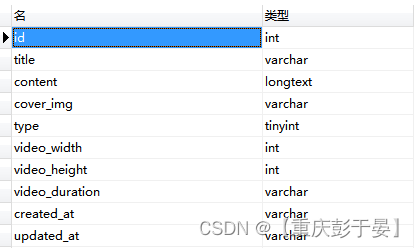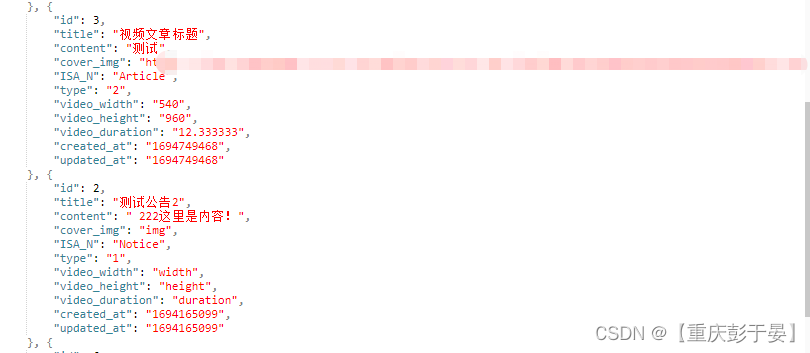一:首先来了解一下 union 和 unionAll
1:取结果的并集,是否去重
-
union:对两个结果集进行并集操作,不包括重复行,相当于distinct,同时进行默认规则的排序;
-
unionAll:对两个结果集进行并集操作,包括重复行,即所有的结果全部显示,不管是不是重复;
2:获取结果后的操作,是否排序
-
union:会对获取的结果进行排序操作。
-
unionAll:不会对获取的结果进行排序操作 。
3:通过下面例子来粗略了解一下
eg1:select * from A where id < 5
union
select * from A where id > 3 and id < 6;第一句获取:id=1、2、3、4 结果集
第二句获取:id=4、5 结果集
总结果集为:1、2、3、4、4、5
但因为 union 会去重所以最终结果集为:1、2、3、4、5eg2:select * from A where id < 5
union all
select * from A where id > 3 and id < 6;第一句获取:id=1、2、3、4 结果集
第二句获取:id=4、5 结果集
总结果集为:1、2、3、4、4、5
union all 不会去重所以最终结果集为:1、2、3、4、4、54:总结
union all 只是合并查询结果,并不会进行去重和排序操作,在没有去重的前提下,使用 union all 的执行效率比 union 高。
二:ThinkPHP对 UNION 和 UNIONALL 的操作说明
UNION 操作作用于合并两个或多个 SELECT 语句的结果集。
使用示例:
Db::field('name')->table('think_user_0')->union('SELECT name FROM think_user_1')->union('SELECT name FROM think_user_2')->select();
闭包用法:
Db::field('name')->table('think_user_0')->union(function ($query) {$query->field('name')->table('think_user_1');})->union(function ($query) {$query->field('name')->table('think_user_2');})->select();
或者
Db::field('name')->table('think_user_0')->union(['SELECT name FROM think_user_1','SELECT name FROM think_user_2',])->select();
支持UNION ALL 操作,例如:
Db::field('name')->table('think_user_0')->unionAll('SELECT name FROM think_user_1')->unionAll('SELECT name FROM think_user_2')->select();
或者
Db::field('name')->table('think_user_0')->union(['SELECT name FROM think_user_1', 'SELECT name FROM think_user_2'], true)->select();
每个union方法相当于一个独立的SELECT语句。
特别注意:UNION 内部的 SELECT 语句必须拥有相同数量的列。列也必须拥有相似的数据类型。同时,每条 SELECT 语句中的列的顺序必须相同。
示例:
通过下面的示例来具体深入了解
现在有两个表article表和notice表
article表结构如下:

notice表结构如下:

需求:通过模糊查询标题(title)和内容(content)来综合获取article表和notice表的数据并且分页
两个表没有任何的关联字段,且字段数也不一样,这时候考虑使用 unionALL
$notice_array = ArticleModel::field('id,title,content,cover_img,type,video_width,video_height,video_duration,created_at,updated_at')->where('title|content','LIKE','%'.$search_value.'%')->unionAll("select id,title,content,created_at,updated_at from hq_notice where CONCAT(title, content) like '%$search_value%'")->limit($start,$end)->order('updated_at','desc')->select()->each(function ($item,$key){$item['content'] = filterContent($item['content']);});
这时候会出现如下报错:
SQLSTATE[21000]: Cardinality violation: 1222 The used SELECT statements have a different number of columns
两个表获取的列的数量不一样
根据需求还需要判断类型,此时先将article的查询语句添加一个数据表不存在的字段 ISA_N 默认值为 Article
->field('id,...,"不存在的字段值" as 不存在的字段名')ArticleModel::field('id,title,content,cover_img,"Article" as ISA_N,type,video_width,video_height,video_duration,created_at,updated_at')
并且 notice 表的获取字段数量也要保持一样,添加默认值
->unionAll("select id,title,content,'img','Notice','1','width','height','duration',created_at,updated_at from hq_notice)
字段对应为:
id=>id,title=>title,content=>content,cover_img=>'img',ISA_N=>'Notice',type=>'1',video_width=>'width',video_height=>'height',video_duration=>'duration',created_at=>created_at,updated_at=>updated_at
最后整合的语句如下:
$notice_array = ArticleModel::field('id,title,content,cover_img,"Article" as ISA_N,type,video_width,video_height,video_duration,created_at,updated_at')->where('title|content','LIKE','%'.$search_value.'%')->unionAll("select id,title,content,'img','Notice','1','width','height','duration',created_at,updated_at from hq_notice where CONCAT(title, content) like '%$search_value%'")->limit($start,$end)->order('updated_at','desc')->select()->each(function ($item,$key){$item['content'] = filterContent($item['content']);});
结果为:

没有的字段填充的是默认的值
补充:
concat函数
可以使用MySQL的concat函数,将多个字段合并成一个字段进行匹配。以下是示例语句:
SELECT * FROM table_name WHERE CONCAT(column1, column2) LIKE ‘%keyword%’
其中CONCAT函数将column1和column2合并成一个字段进行匹配,%keyword%表示需要匹配的关键字。
相当于使用or操作符
可以使用or操作符来连接多个like子句,让查询同时匹配多个字段。以下是示例语句:
SELECT * FROM table_name WHERE column1 LIKE ‘%keyword%’ OR column2 LIKE ‘%keyword%’
其中table_name为表名,column1和column2是需要匹配的字段名,%keyword%表示需要匹配的关键字。









)









